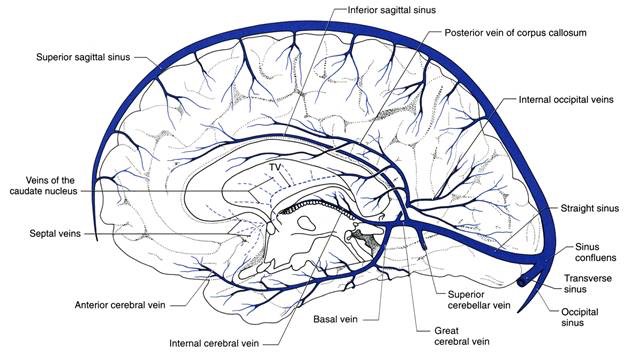Occipital sinus
 The occipital sinus is the smallest of the cranial sinuses.
The occipital sinus is the smallest of the cranial sinuses.
It is situated in the attached margin of the falx cerebelli, and is generally single, but occasionally there are two.
It commences around the margin of the foramen magnum by several small venous channels, one of which joins the terminal part of the transverse sinus; it communicates with the posterior internal vertebral venous plexuses and ends in the confluence of sinuses.
Occipital sinuses were discovered by Guichard Joseph Duverney.
A 32 year-old female presented with persistent headache and nausea. MRI showed a 4th ventricular mass and hydrocephalus. Venous sinus anatomy appeared unusual, thus an MRV was performed. MRV revealed the OS as the main drainage pathway for the whole brain, providing the only drainage between the superior sagittal sinus and the jugular veins through the marginal sinus (MS). Both transverse and sigmoid sinuses were hypoplastic. Flow through the straight sinus was diminished. Thus, endoscopic third ventriculostomy and biopsy were performed as the first step. Postoperatively the nausea persisted and biopsy was inconclusive. Thus, a second surgery was planned. Dural opening was tailored so as not to damage the OS and MS. Tumor was resected subtotally through the limited dural opening. Pathology was low-grade glioma .
Awareness of rare variations of the venous/sinus anatomy may fundamentally change the surgical management plan and would be crucial in minimizing the risk of potentially fatal complications 1).